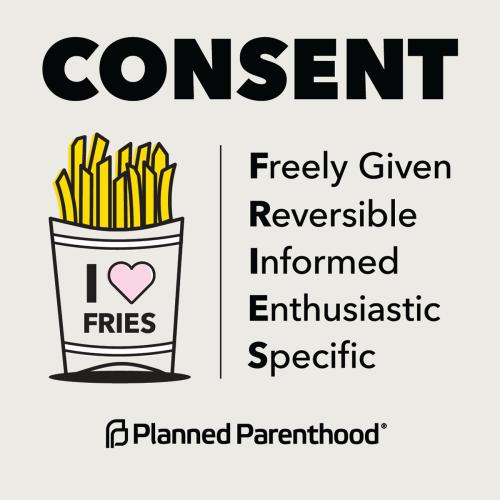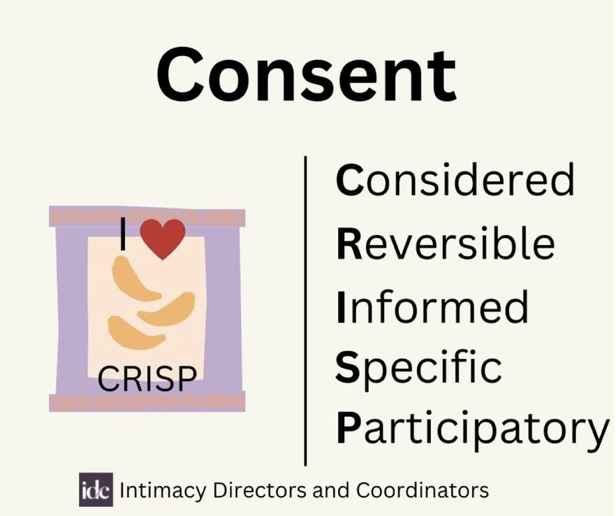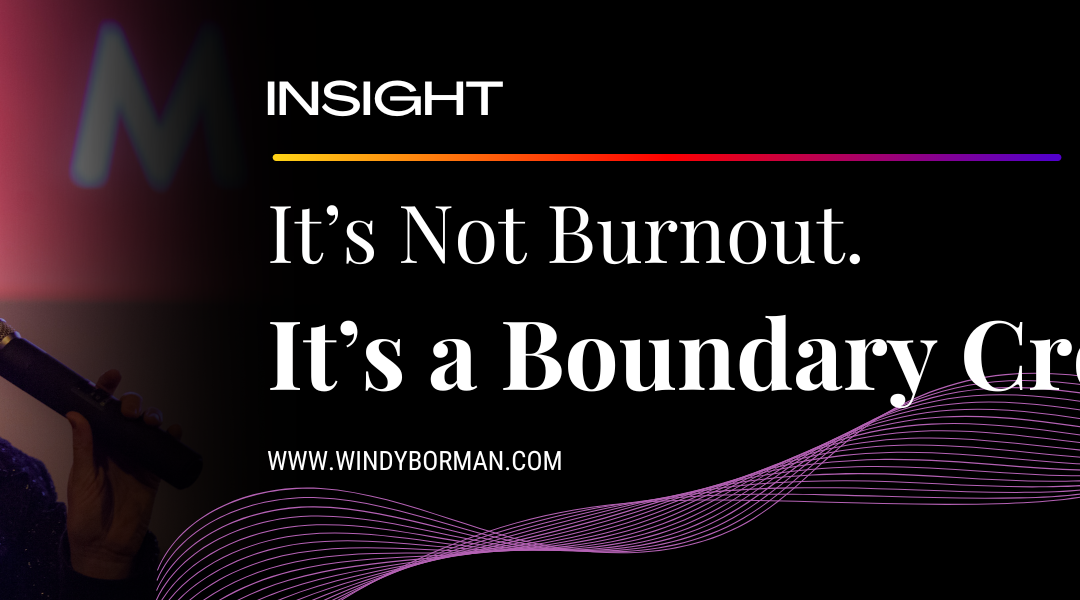A New Perspective on Overworking
Are you currently experiencing burnout due to a toxic work environment? Do you find yourself feeling drained and overwhelmed by your ever-growing to-do list? Are you easily agitated both at work and at home? If so, it’s possible that the root cause of your exhaustion isn’t burnout, but rather a crossed boundary.
When your boundaries aren’t respected, it can lead to a sense of deep exhaustion. Before taking any drastic measures, it’s essential to identify where the boundary cross is occurring and brainstorm potential solutions.
Boundaries
Fostering a consensual and creative environment at work begins with defining boundaries and consent.
Personal boundaries are guidelines, rules, or limits that a person creates to identify reasonable, safe, and permissible ways for other people to behave toward them and how they will respond when someone passes those limits.
– Ann C. James, Founder of Intimacy Coordinators of Color
Everyone has boundaries; however, we often don’t realize we have a boundary until it is crossed. Instead of waiting for another boundary cross to occur, I invite you to proactively think about your boundaries.
To begin, open a new document and create three columns. Label each column as “Yes,” “Maybe,” and “No.” Start by listing the tasks and responsibilities that you feel comfortable with in the workplace in the “Yes” column. Then, list the things that you do not feel comfortable doing or receiving in the “No” column. Finally, list the things that you require more information about before making a decision in the “Maybe” column.
This document is meant to evolve and change over time, so don’t feel pressured to record all your boundaries. Your goal today is to create a rough draft. Allow yourself the freedom to modify the list as you begin to establish your boundaries. For instance, you might discover that a “Maybe” turns into a “Yes” or “No” once you have more information. Similarly, you might find that a boundary is a “Yes” when you have more trust and support from your colleagues, but a “No” under different circumstances. Lastly, remember that boundaries are unique. Your list will not resemble anyone else’s, and that is perfectly fine and normal.
Set the timer for five (5) minutes and start writing down your boundaries.
Consent: FRIES vs. CRISP
Now that you have a draft list of your boundaries, it is time to add a consent lens.
Planned Parenthood created the acronym FRIES as a definition for actual sexual encounters. While this causes some problems when applying it to professional environments—including simulated performances of romance and intimacy for performers—I find the acronym is a helpful starting place to understand consent.

FRIES stands for:
- Freely given. Consenting is a choice you make without pressure, manipulation, or under the influence of drugs or alcohol.
- Reversible. Anyone can change their mind about what they feel like doing, anytime. Even if you’ve done it before, and even if you’re both naked in bed.
- Informed. You can only consent to something if you have the full story. For example, if someone says they’ll use a condom and then they don’t, there isn’t full consent.
- Enthusiastic. When it comes to sex, you should only do stuff you WANT to do, not things that you feel you’re expected to do.
- Specific. Saying yes to one thing (like going to the bedroom to make out) doesn’t mean you’ve said yes to others (like having sex).
IDC Professionals, one organization training Intimacy Practitioners and Consent-Forward Artists, updated the acronym to CRISP for simulated performances of romance and intimacy.

In their version, CRISP stands for:
- Considered. While we can’t fully erase the power dynamics, systemic racism, and other effects of oppression that make freely given consent difficult at work, we can consider all the factors and information.
- Reversible. Anyone can change their mind about what they feel like doing at any time.
- Informed. Someone can only consent to something if they have the full story.
- Specific. Saying yes to one thing does not mean they’ve said yes to others.
- Participatory. People need to be involved in the decision-making process around what happens with and to their bodies!
IDC Professionals kept Reversible, Informed, and Specific because those three elements are important for real and performed intimacy. However, by replacing Freely Given and Enthusiastic with Considered and Participatory, they recognize we cannot erase the power dynamics in performance, but we can consider them and include performers in decisions about what happens to their bodies.
This gets closer to how we can define consent in a professional, creative environment regardless of our role in an organization or position on a call sheet.
Reflection:
Many of us are working toward a day when consent is built into our professional and personal lives, but we are not there yet. In the meantime, I invite you to test-drive the CRISP acronym and see how you can apply it to your creative and professional life.
Here are some questions to consider:
- What do you think of the FRIES and CRISP definitions? What can you keep and what needs replacing in your work?
- What is one work example where you do/did not meet all five (5) elements of consent?
Now let’s use the consent acronym to diagnose your burnout in an exercise I call “Make it CRISPy”.
Make It “CRISPy”:
With your burnout example in mind, ask yourself the following questions:
- Considered. While we cannot erase all the power dynamics in the creative environment, what do you need to consider?
- Reversible. Did anyone communicate that you can change your mind about what you feel like doing at any time? Do you feel like reversing your consent?
- Informed. What is the full story? Did you receive all the information from your team? Was any information withheld?
- Specific. What are you, your employers, or your supervisors specifically asking each person to do?
- Participatory. Are you participating in decisions and outcomes? Is the whole team participating in decisions and outcomes?
This exercise gives you a framework for analyzing non-consensual policies and behavior at work that could be contributing to your feelings of burnout. It also breaks the elements down so you can pinpoint where the boundary cross is occurring.
If you enjoyed this post:
- Share your feedback in the comments
- Explore more consent resources on my Blog
- Sign Up for my upcoming events


